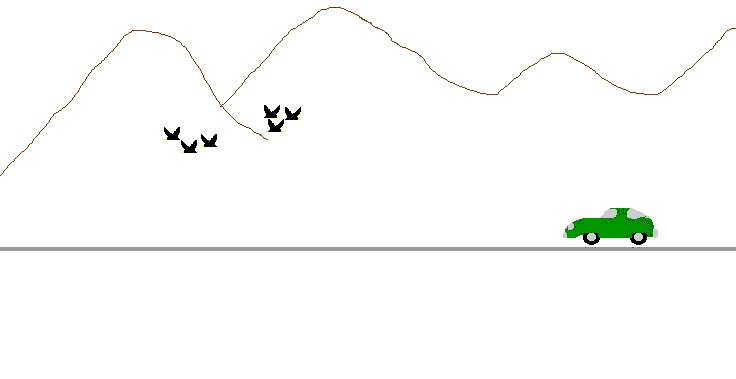


One of the frightening things about Newton's space was that if his concepts
of space and time were somehow shown to be wrong, if they proved to no longer be
valid, then all of Newton's pysical laws would crumble. But since their
inception, his pysical laws have remained strong. Newton's concepts, over time,
have led to new scientific discoveries, spanning the domains of the planets,
electricity, and heat.
Everything was fine until Albert Michelson began
doing experiments to time the propogation of light in 1881. With this, the
result of any measurement of the speed of light (or anything) depends on how the
observer happens to be moving. This means, to remain at rest in absolute space,
unaffected by any outside force, you would measure the speed of light to be the
same in all directions. What if you're moving though?
Well, say you are
moving westward through space -- you would see westward-propagating light (light
which is coming from the west, which you are approaching) slowed, and the speed
of eastward-propagating light would seem to increase. Here's an example:
 Say
you're traveling in a car heading west along the highway. You look out the
windshild and can see a flock of crows flying west ahead of you. Glance out the
rear window and you see another flock of crows, but these flying eastwards, away
from you. Because you are moving in the same direction as the crows ahead of
you, their speed seems much slower than those behind you.
Say
you're traveling in a car heading west along the highway. You look out the
windshild and can see a flock of crows flying west ahead of you. Glance out the
rear window and you see another flock of crows, but these flying eastwards, away
from you. Because you are moving in the same direction as the crows ahead of
you, their speed seems much slower than those behind you.
For these crows,
their speed is regulated by air.
On to the Problem:
Michelson's idea was
that from the Earth, we should measure the speed of light to be different for
different directions, with the changing seasons only slightly changing these
differences, because the Earth moves so slowly when compare to light. This
initial prediction proved a daunting challenge for experimental physicists, but
Michelson rose to the task. Michelson
interferometry was the experimental technique used, but for some
reason, Michelson could not find any evidence that light speed altered with
direction. His results showed that the speed was the same in all directions for
all seasons.
A lot of physicists were skeptical of the whole experiment
because of the inherent problem with interesting experiments. This problem is
that they are very difficult, in that no matter how carefully they are planned
or executed, incorrect results can still be gotten. With a difficult experiment,
even the slightest problem, like a tiny abnormality in the apparatus, or any
slight, unexpected change in any variable (like temperature), might change the
results. Nearly any experiment that deals with re-evaluating the nature of the
Universe and the physical laws we know is going to be difficult. An example of
such an experiment would be any experiment purported to discover cold fusion, as
well as those experiments trying to deny the existence of cold fusion. The big
problem with nearly all the experiments that challenge the standard laws and
theories of today is that they are usually wrong. Once in a while though, an
experiment points to some new understanding of nature previously unheard
of.
But how does a physicist sort through all these experiments to find
the trustworthy ones? It is said that the mark of a great physicist is the
ability to "smell." It is intuition, knowing which experiments to trust, and
which not to -- which ones are worth worrying about and which should be ignored.
Over a long time, a series of difficult experiments, and their offshoots, may
eventually point to some truth, if not "the" truth being searched for. The most
important thing though in contributing to scientific progress is being able to
figure out early on which interesting, difficult experiments to trust.
This site maintained by Adam
Johnsen.
@1999







